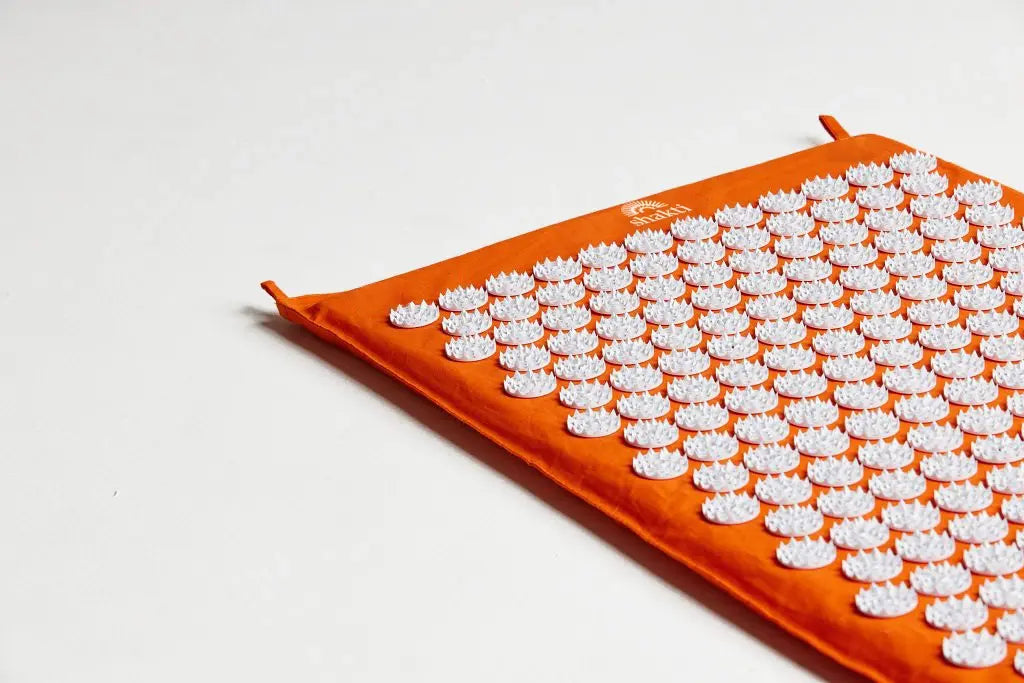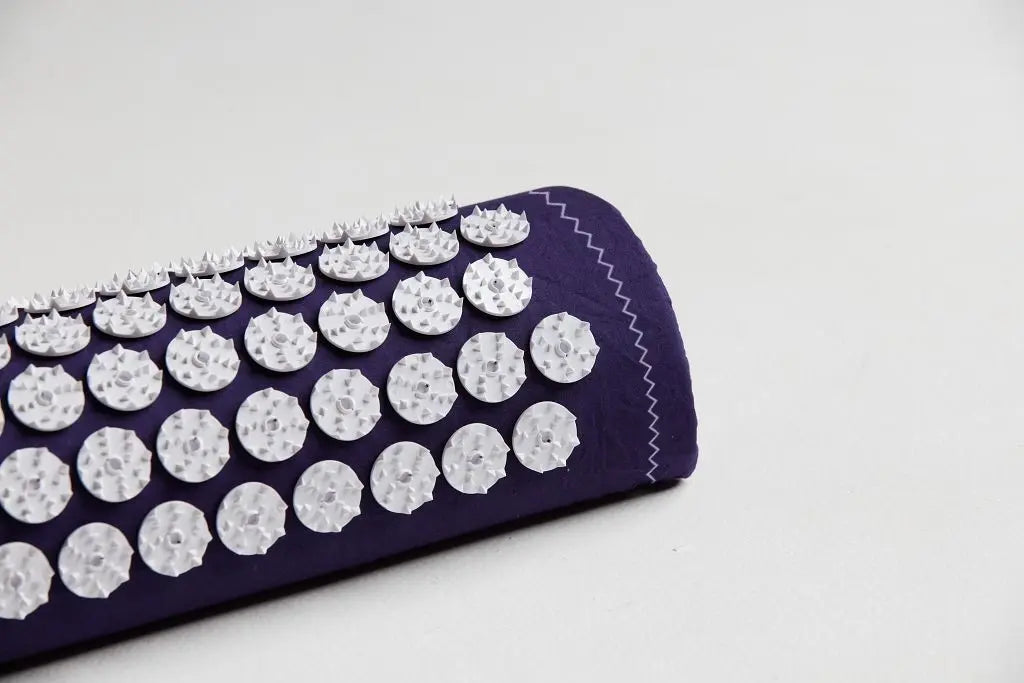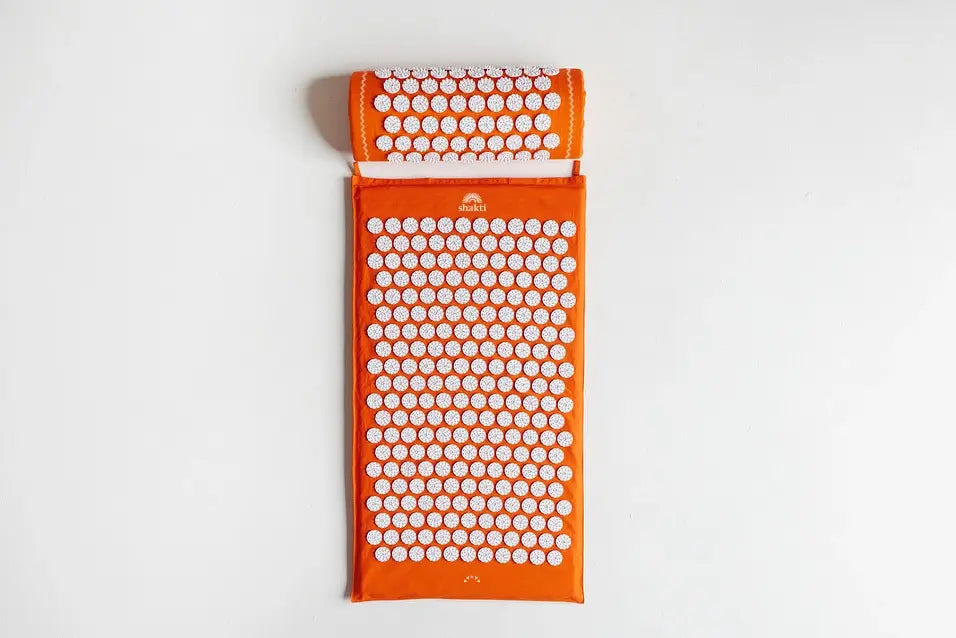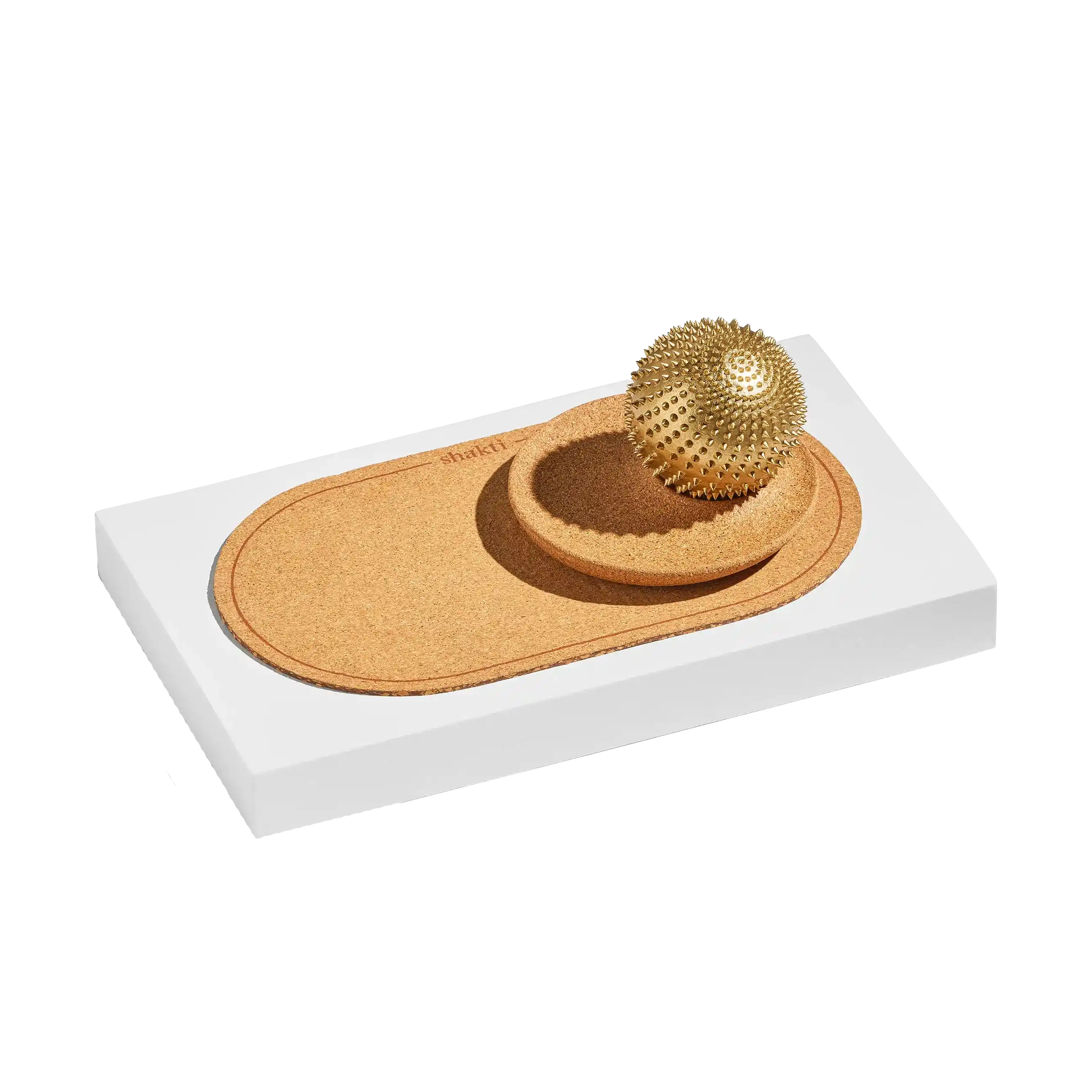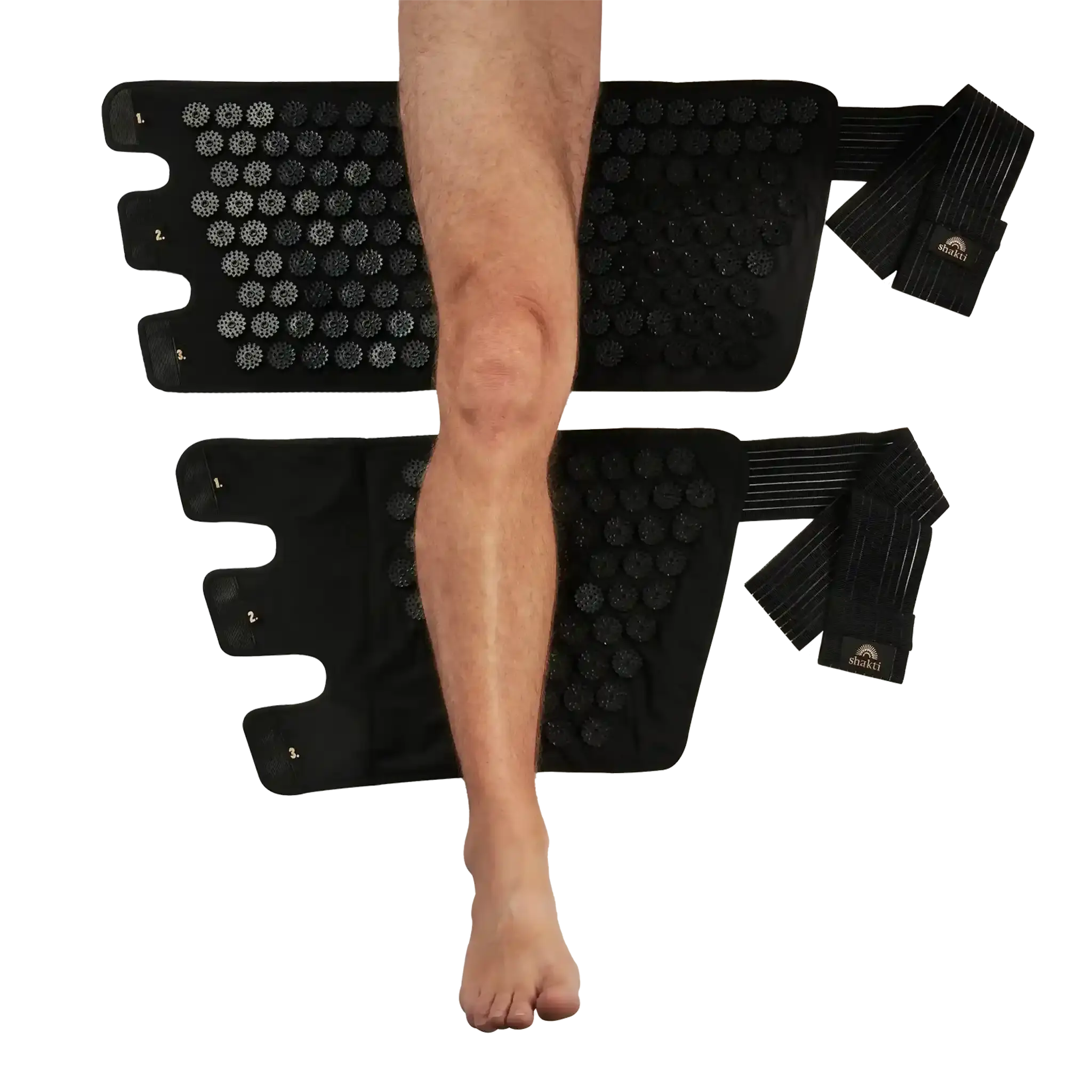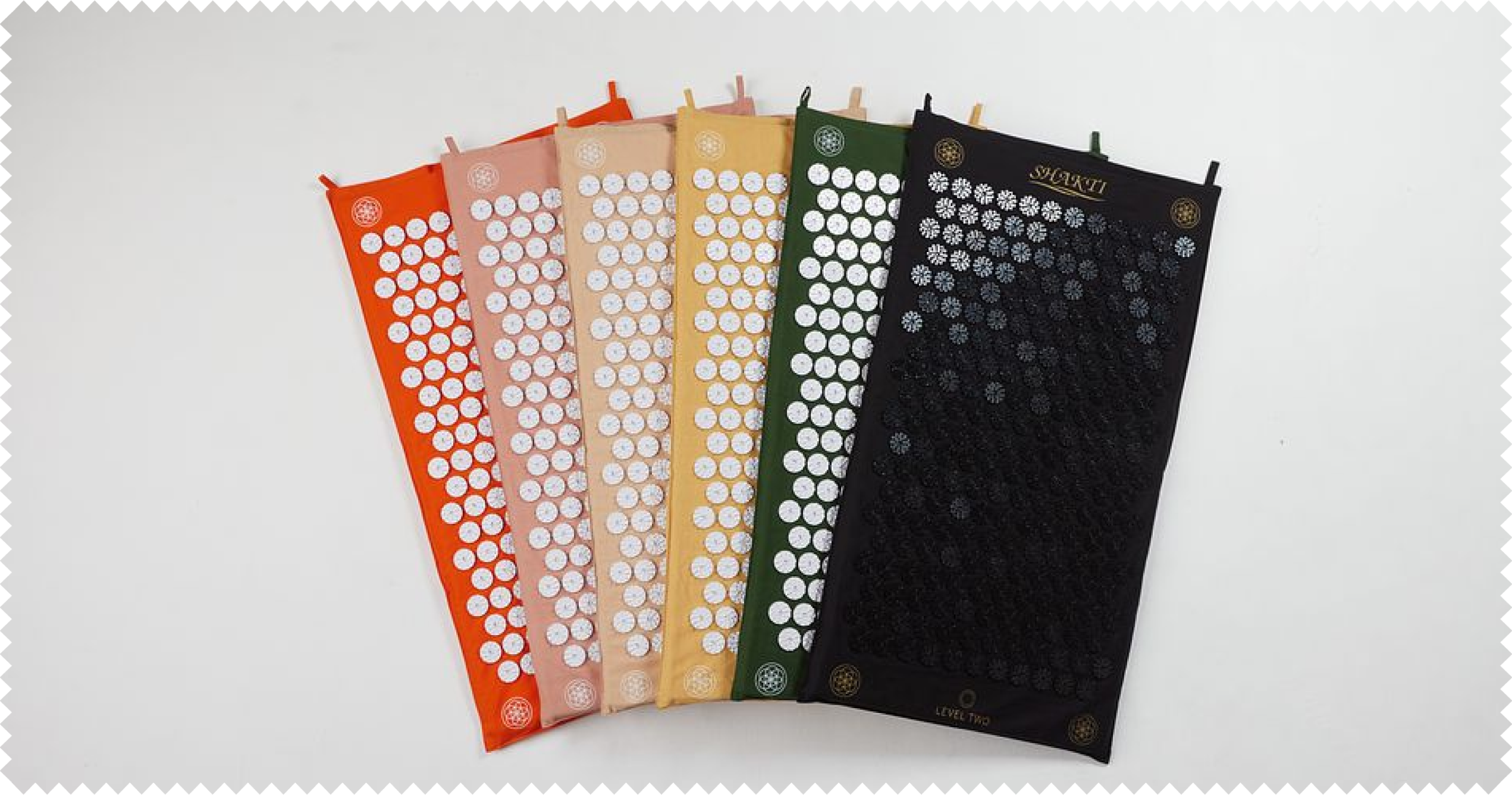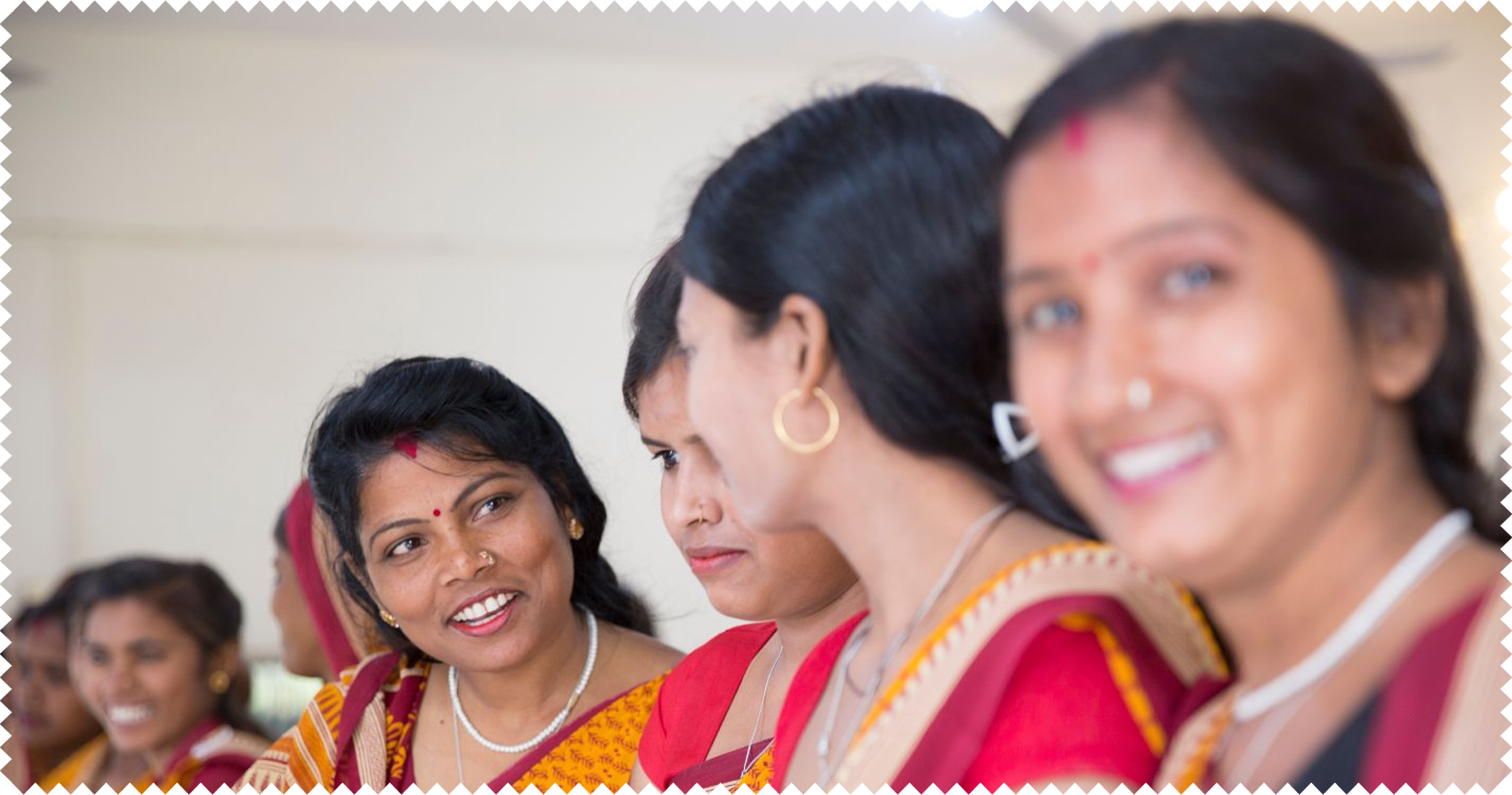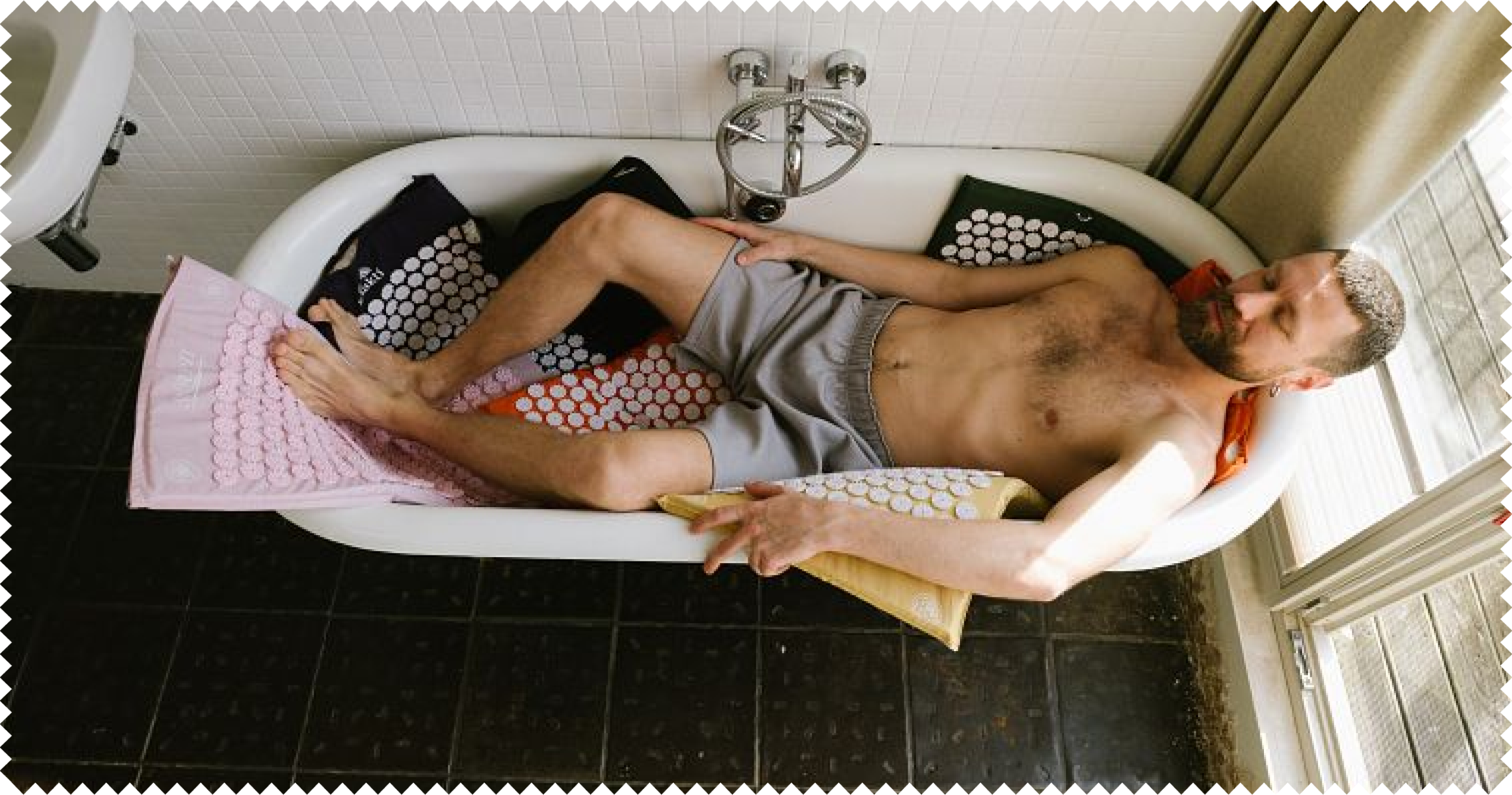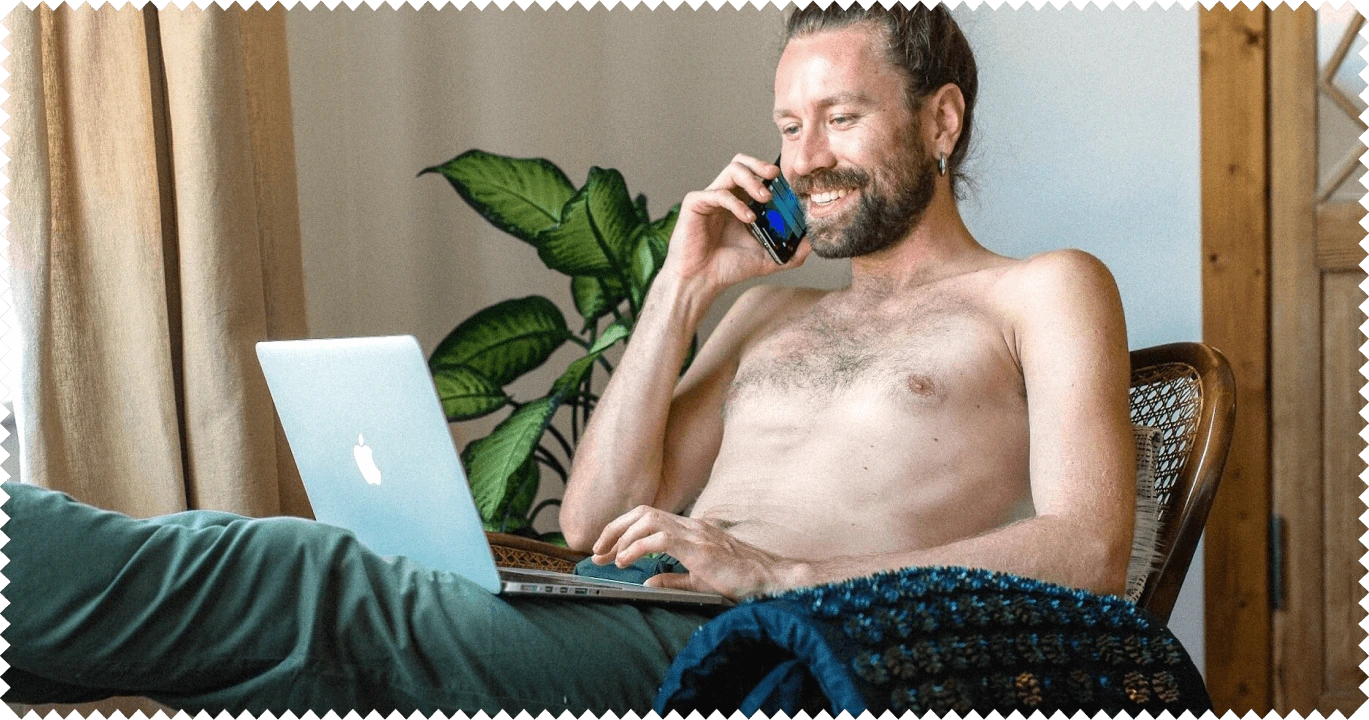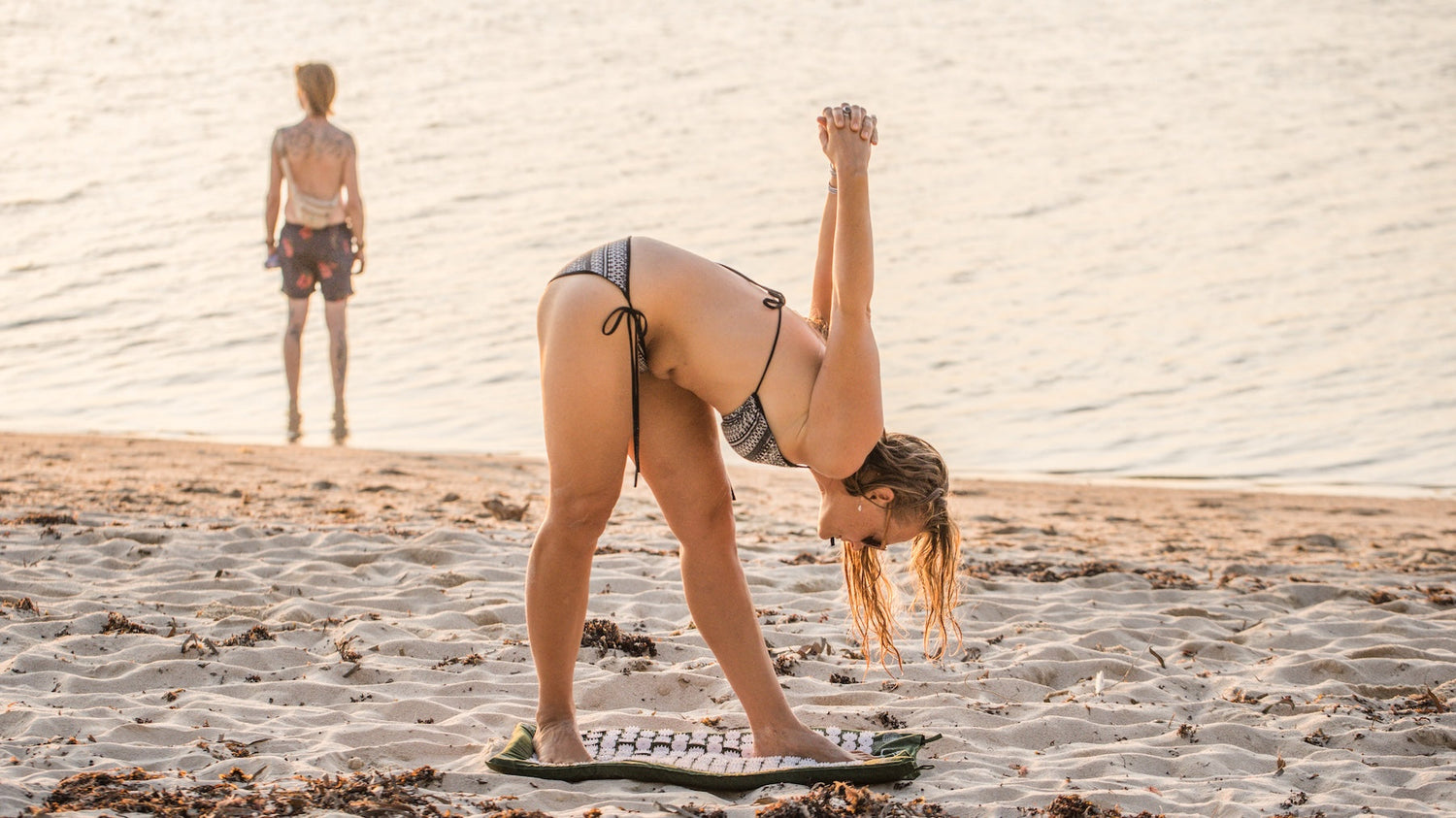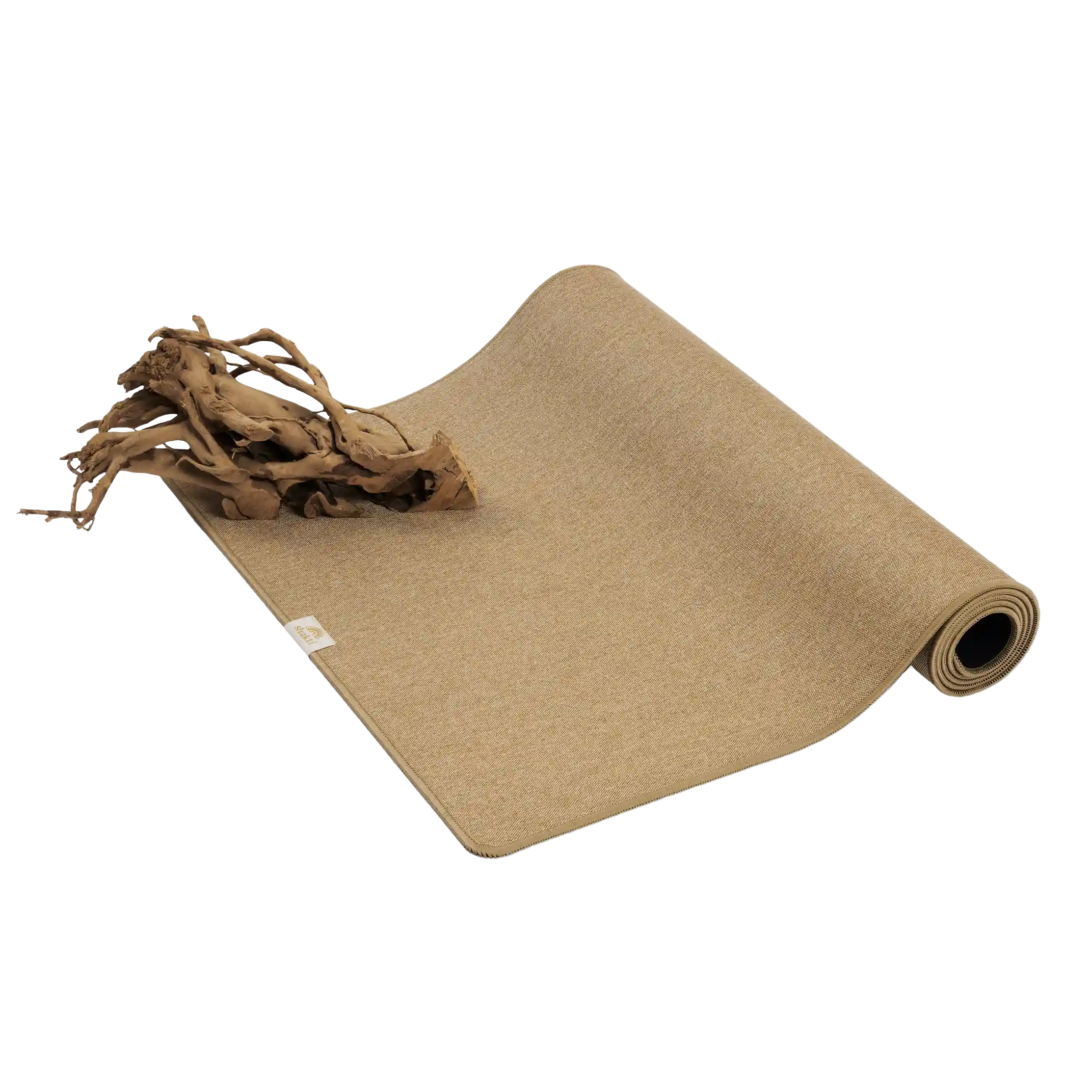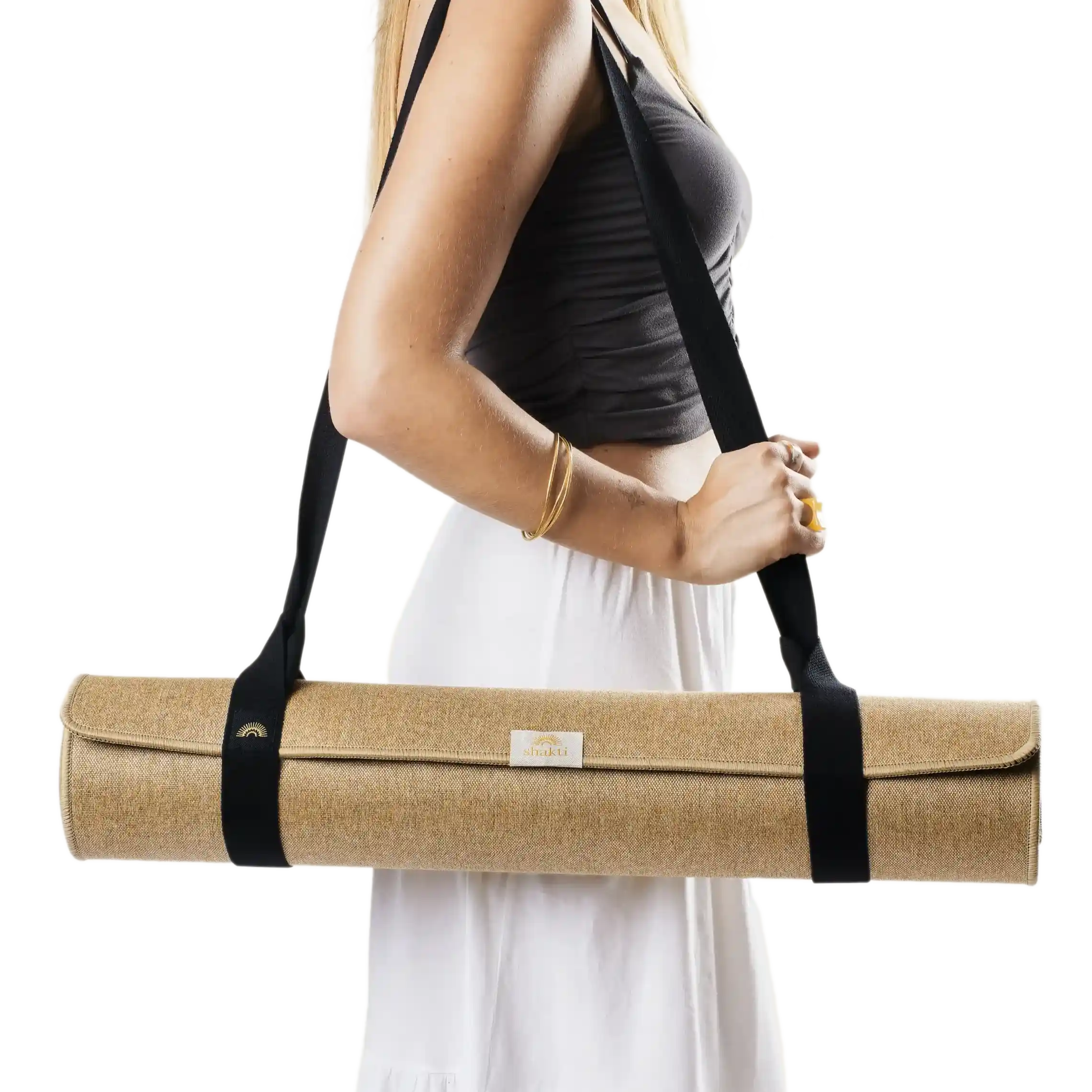Yoga is estimated to have existed for over 3,500 years. In that time, many different styles and movements have developed. One style that is increasingly being mentioned in magazines and online is Yin Yoga . Have you ever heard of it? Meditative, gentle, calm - if that sounds good to you, then you should take a closer look. Here we explain what Yin Yoga is all about, where it originated, and, above all, what effect this style can have on the body and mind. Roll out your mat, because at the end we'll show you exercises to help you get started with Yin Yoga. Namaste - we're glad you're here.
Content
1. What is Yin Yoga? - Meaning & History
2. yin yoga: effects on the mind and body
3. Yin Yoga for relaxation - what you should pay attention to
4. Yin Yoga - Exercises for Beginners
5. try Yin Yoga: Prevent back pain & mental blockages
What is Yin Yoga? - Meaning & History
If you have tried different styles, you know that yoga always has something to do with movement - sometimes more, sometimes less. While some styles, such as Yoga Nidra or Yin yoga are intended to be predominantly meditative, others particularly activate the muscles.
Surely "Yin and Yang" means something to you? Essentially, these two terms represent opposites that complement each other; for example, darkness and sun. From a yoga perspective, Yang can be seen as strength, as a muscular part of the body, and Yin as connective tissue and joints, as relaxation. Yoga teachers Paul Grilley and Sarah Powers wanted to create a balance to the dynamics beyond the powerful yoga styles – this is how Yin Yoga developed. The goal is therefore to achieve deep relaxation.
This makes it one of the most peaceful forms of yoga. While in Power or Vinyasa Yoga you quickly change asanas in sync with your breathing, in this practice you hold them for three to five minutes – or even longer. The long holds ensure a more intense stretch of the fascia tissue surrounding muscles, bones, and organs. The exercises are usually performed lying down or sitting down and target the back, hips, or legs.
During the Yin practice, you should approach your own inner life, taking into account your individual anatomy. You should engage with your emotions, surrender to them and learn new things about yourself. You don't have to be active yourself, but are to a certain extent a passive observer. Let things happen and be as they are... relax. As with any style of yoga, it is important that you always listen to your body, do not exceed your individual limits and sink into the poses at your own pace.
Is Yin Yoga strenuous?
Although Yin yoga While it can be viewed and experienced as a kind of respite from everyday stress, it is not a "light-hearted" practice. Since the asanas are held for several minutes, it can also be strenuous. You are trying to overcome physical and emotional blockages – and if these have been present for a long time, this is not so easy. In these moments, yoga teaches you that endurance is worthwhile, that stimuli can intensify with longer holding, and that emotions may be lurking within you that you are not even aware of. Especially in the hip and neck area, psychological tensions are reflected in the form of tension. By releasing these, you can better achieve emotional balance. Dealing with these emotions and holding the poses for a long time can, in combination, be quite strenuous, but perhaps in a different way than, for example, Vinyasa is strenuous.
Yin and Vinyasa - Differences
If you have already had experience with different yoga styles, you know that Vinyasa, Ashtanga or Power Yoga often focus on strengthening the muscles, on the Yang. In Yin Yoga, the fascia is focused , and the exercises are performed without direct exertion of force. Thus, this style is not comparable to the others—rather, it can be a valuable addition to your otherwise strengthening practice and promote your balance between yin and yang.
Yin yoga: effects on the mind and body
Each yoga style has its own focus. It always has a unique effect on the practitioner—because every body and mind are different. This is also true of Yin Yoga—it's best to explore its effects for yourself and experience them for yourself. Nevertheless, there are, of course, some short- and long-term effects that can occur with regular Yin Yoga practice.
Effects on a physical level
When Yin Yoga is practiced regularly through exercises, the entire body can become more flexible. Practical side effect: the metabolism is also boosted. And a particularly important point for many: Tension in the body can be relieved or, in the best case, avoided. As a frequent sitter, for example, you can prevent back pain. By holding the positions for a long time, ligaments, muscles and tendons are stretched and deep-lying connective tissue is also reached. Yin yoga also loosens up the fascia in the shoulder and neck area. On an energetic level, blockages can be alleviated, allowing energy to flow freely again.
In general, through regular yoga practice and meditation, you can Get to know your body better and develop greater awareness of physical perception. This, in turn, has positive effects on your mind.
Effects on a psychological level
It's about sensing the body, with all its sensations—and also perceiving the energetic connections and flows. Gaze and attention are directed inward, a break from the everyday world, so to speak. During the practice, you let go of the outside world. Your thoughts can calm down, and with a little practice, a meditative state can be achieved during the asanas. With regular sessions, you can promote emotional balance, free your subconscious of burdening old burdens, and find more peace and serenity in your everyday life and within yourself. Yin Yoga can help reduce and prevent stress. Regular practice can also be supportive in cases of anxiety or depression. By releasing physical blockages and tension, emotional blockages can be alleviated at the same time—even subconscious feelings can sometimes surface.
In short: Yin Yoga has a positive and calming effect on body and mind . And there are many reasons to try the style for yourself. So, what are you waiting for? Do something good for yourself— self-care. is important.
Yin Yoga & TCM - a long tradition
Yin Yoga has long held a place in Traditional Chinese Medicine. It is associated with the concept of meridians – energy channels that run through the body, including its organs, muscles, and other systems, and connect them to one another. This concept can also be found in acupressure . Life energy, known as Prana in Sanskrit and Chi in Chinese, also flows through these meridians. If the energy channels are blocked or disrupted, an imbalance occurs that can manifest itself physically and psychologically. Yin and Yang are no longer balanced. This basic assumption is also the basis of Yin practice. The exercises can help promote the Yin side. The asanas are based on the course of the meridians and thereby stimulate the flow of energy. According to TCM, this should contribute to well-being. In a sense, Yin Yoga builds a bridge between Traditional Chinese Medicine and yoga practice.
Yin Yoga for relaxation - what you should pay attention to
Yin yoga is suitable for beginners and advanced yogis. However, especially if you don't have much experience with meditative practices, holding the positions for a long time can be a bit of a test of patience. This is because the quieter it is and the less active you are, the louder your thoughts can sometimes become. But if you approach the practice step by step, you will learn to remove the mental processes from you. For your first yoga experience, the guidance of an experienced teacher in a yoga studio can help you.
Always remember in your practice: everything can, but nothing has to. Respect your physical limits and don't compare yourself to the yogis next to you on the mat or on social media.
As a beginner, you should listen very carefully to your body when adopting the postures. Avoid overstretching your joints and find the optimal load for you. You should only gradually increase the time in the poses and therefore the intensity.
Equipment for your practice
If you want to fully immerse yourself in your practice, various tools can support you, e.g:
- Meditation cushion : Sitting postures become easier when you focus on the Pillow You can use it to cushion your knees when lying down.
- Acupressure mat : Lying on an acupressure mat in an asana can help you relax more quickly. Acupressure also helps relieve tension, thus enhancing the positive effects of yoga.
- Yoga blocks : They support you in different positions and can make stretching easier or more intense for you, depending on how they are used.
- Blanket : This helps keep you warm while practicing in lying positions. It can also be used to support your knees during some exercises.
- Eye pillow : It can help you relax more deeply if you place it on your eyes and temples while holding the positions.
- Yoga straps : These can help you achieve a stretch if you're not yet able to hold your feet with your hands. Think of them as an extension of your arms for asanas.
Yin Yoga - Exercises for Beginners
Before we move on to the Yin Yoga exercises, there is one important note: The asanas in this style should be performed with a different focus. It's not about body tension—quite the opposite. Unused muscle groups should be completely relaxed during the poses. This is very different from Vinyasa and Ashtanga Yoga. That's why some of the positions here have different names. So don't be surprised if a yoga exercise , which you already know from your previous practice, is now named and carried out differently.
To begin your practice, place your yoga mat in a quiet place. Keep your props within easy reach. Slowly settle into each pose; it's best not to go too deep into the pose at first, but rather intensify the stretch over time. Release gradually, listening to the cues your body is giving you. If you like, you can sink a little deeper into the asana with each exhalation. If you feel a stretch, that's perfect—but avoid any pain.
Yin Yoga exercises for the back - Melting Heart, Child's Pose & Snail
Melting heart
For this exercise, get into a quadruped position: your hands are under your shoulders on the mat, your knees are under your hips and the backs of your feet are on the mat. Move your hands forward in small movements until your chest slowly moves towards the mat; your hips remain above your knees. Let your hands move towards the front edge of the mat until your chest is as close to the floor as possible. This asana opens up the chest and shoulder area and gently but specifically stretches the upper back with yin yoga.
Child's pose
Start in a quadruped position. From here, pull your hips back and rest your thighs on your calves. Place your arms next to your body and your hands by your feet. You can get really heavy here and sink down. Then bring your forehead to the floor. If necessary, you can also place your head on a yoga block or Pillow as an alternative. You can vary: Spread your knees as wide as a mat, stretch your arms forward, move your upper body with your arms to the left or right for a more intense stretch of the flanks. In this way, you give your lower back a gentle stretch with the Yin yoga exercise and can also benefit from a calming effect on the mind.
Snail
Lie on your back. Then place a Pillow under your bottom and lift your legs upwards. Now you have two options:
- Either lower your legs towards your upper body and embrace your knees with your arms,
- or bring your feet to the floor behind your head or onto a yoga block. Your knees can be slightly bent.
During this exercise, the spine is stretched intensively. The blood circulation in the head increases and the lungs are pleasantly deflated.
By the way: If you want to feel the asana even more intensely, you can lie on your acupressure mat. But beware: This isn't for beginners—by shifting your weight to your back, you'll clearly feel the spikes on the mat.
Yin Yoga - Hip & Chest Opener
Butterfly
Sit cross-legged and bring the soles of your feet together. Place your feet in front of you at a comfortable distance—the closer your feet are to your hips, the more intense the stretch. If you find it difficult to open your legs, sit on a Pillow or a block, or place blocks below your knees. Now let your upper body become heavy and lower it over your legs, rounding your back. You can place your arms at your ankles or stretch them out in front of you on the mat to sink even deeper into the asana.
With this posture you bring opening and flexibility to the hip region - this can help with hip flexor pain It can be soothing. It also relaxes and relieves pressure on the lower back. The butterfly pose can also be beneficial for menstrual cramps.
Deer
Start this asana in butterfly pose. Now move the right shin so that it is parallel to the short end of the mat in front of you. Now bring the left foot behind you; the shin is parallel to the long edge of the mat. You can determine the intensity of the stretch based on the angle of your knees. Once you have settled in, let the left side of your pelvis sink deeper into the mat and sit upright. Switch legs and bring your front leg into the position of the back leg. Keep both sides the same length. You should feel a stretch in the left groin area. If you want more, you can bend your upper body over your front leg and lie down.
This asana creates flexibility and opening in the hips. You also mobilize your knees.
Dragon
Start here in a big lunge. Ground your back knee and the back of your foot. If you like, place a blanket under your knee to cushion it. Lower your hips and push your pelvis forward. Your front knee remains above the ankle joint. You can rest your hands on your thigh or on blocks. If you want to intensify the stretch, you can bend forward and place your forearms to the side of your front foot on the mat or on blocks. Remember to do this pose on both sides.
In contrast to the seated and lying asanas, this one is more active. During the pose, you open your hips and groin. At the same time, the front of your thighs are stretched. This increases flexibility, relieves strain on your back, and can help prevent sciatica with Yin Yoga. By opening your hips you can release fears, tensions and stress.
Yin Yoga - Leaving Positions
The so-called rebound is about feeling an asana. This can lead to the flow of long pent-up emotions that are overwhelming you. You may also simply feel light. Just imagine it: At this moment, the body's energy pathways are released and energy flows through them. To find your way back to a neutral position from the asanas, you can choose from the exercises:
- Release the asana as slowly as possible with as little movement as possible. Slide into a supine or prone position and get into a position where you can relax all your muscles. Then feel the effect of the previous asana.
- After a passive asana, switch to an active one, such as Downward-Facing Dog. Listen to your intuition and make movements that are good for you at that moment.
Try Yin Yoga: Prevent back pain & mental blockages
Is Yin Yoga healthy? There is no general answer to this question. We can only say: try it out. Then you will feel the effect the practice has on your physical and mental well-being. Yin yoga helps you to relax, can be beneficial for your back and muscles and can help with stress, depression and the like. However, as with many yoga styles and sports in general, every body is individual. Get involved in the practice and try out the asanas according to how you feel.



